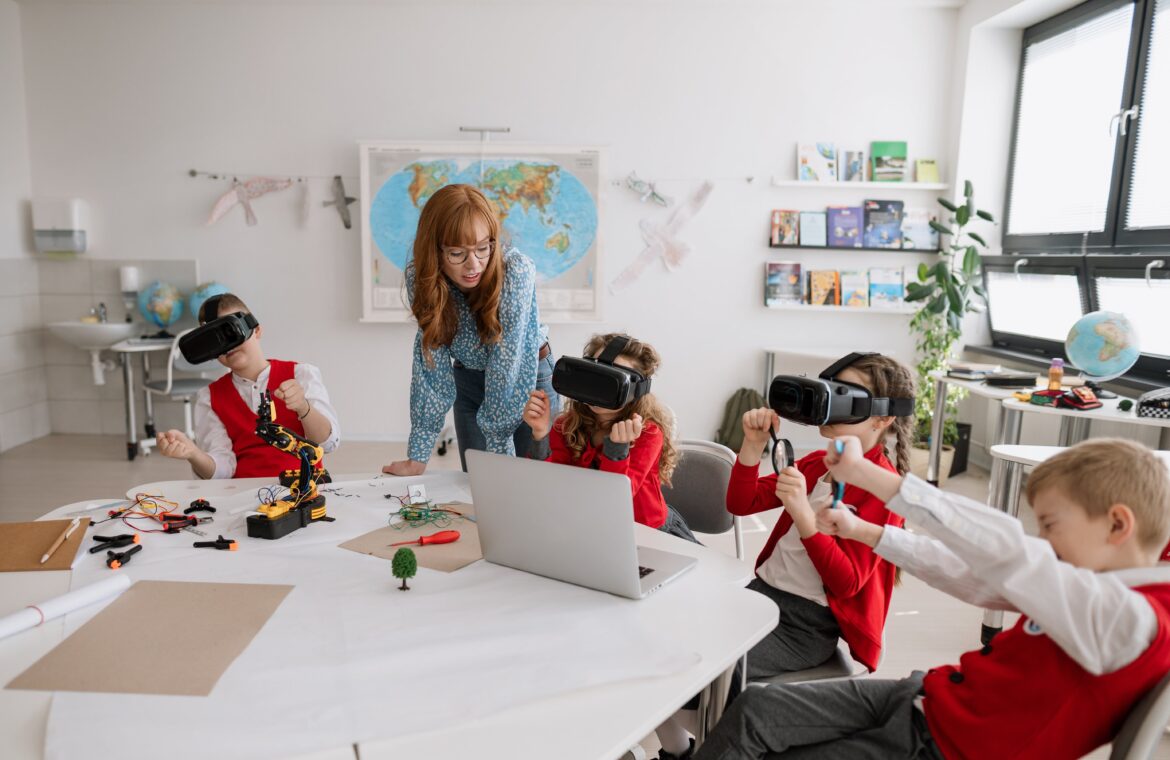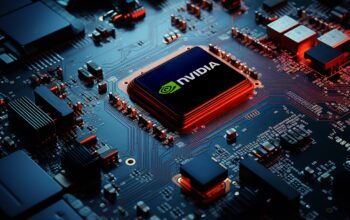The Metaverse, a burgeoning digital landscape where users interact with virtual environments and each other, holds transformative potential for education. It’s poised to redefine how we learn, teach, and experience knowledge, blurring the lines between the physical and digital worlds. Through the use of advanced equipment like virtual reality glasses, avatars, and smartphones, students and teachers can engage in unprecedented ways.
The Promise of Immersive Learning
The Metaverse offers a unique opportunity to transcend the limitations of traditional learning environments. Imagine students exploring ancient civilizations through virtual time travel, dissecting virtual organisms in biology class, or collaborating on engineering projects in a shared digital space. These immersive experiences foster engagement, motivation, and deeper understanding of complex concepts. The use of simulation and gaming platforms enhances these experiences, making learning both fun and effective.
- Enhanced Student Motivation: Research suggests that the immersive nature of the Metaverse can significantly boost student motivation and engagement. By offering interactive, game-like experiences, the Metaverse makes learning fun and encourages active participation.
- Problem-Based Learning: The Metaverse can simulate real-world scenarios, allowing students to solve problems, make decisions, and experience the consequences of their choices in a safe, virtual environment. This hands-on approach promotes critical thinking, problem-solving skills, and creative thinking.
- ‘Onlife’ Learning: The Metaverse aligns with the concept of ‘Onlife,’ where the online and offline worlds merge. It creates a seamless learning experience that combines traditional education, real-world experience, and digital interactions, fostering a holistic understanding of knowledge.
Redefining Content Delivery
The Metaverse is not merely about immersive experiences; it also revolutionizes how educational content is delivered and consumed. Through network connectivity and innovative platforms, teachers can reach students in ways never before possible, fostering a new type of classroom interaction that bridges geographical divides.
- Interactive Content: Traditional textbooks and lectures can be transformed into interactive 3D models, simulations, and virtual field trips. This multi-sensory approach caters to diverse learning styles and enhances knowledge retention.
- Personalized Learning: The Metaverse can adapt to individual learning needs, providing tailored content, pacing, and feedback. AI-powered tutors can offer personalized guidance and support, enhancing the effectiveness of instruction.
- Global Collaboration: The Metaverse transcends geographical boundaries, connecting students and educators from around the world. This fosters cross-cultural understanding, collaborative learning, and access to a wider range of educational resources.
The Role of Technology
The Metaverse is built upon a foundation of cutting-edge technologies, each playing a crucial role in its educational potential. From the advanced simulation capabilities of the Meta Quest to the widespread use of smartphones, these technologies enable a new level of connectivity and interaction in the virtuality of education.
- Virtual Reality (VR): VR headsets transport users into fully immersive virtual environments, creating a sense of presence and allowing for experiential learning.
- Augmented Reality (AR): AR overlays digital information onto the real world, enhancing learning materials with interactive elements and visualizations.
- Artificial Intelligence (AI): AI powers intelligent tutoring systems, personalized learning pathways, and natural language processing for communication within the Metaverse.
- Blockchain: Blockchain technology can secure educational credentials, ensure the integrity of data, and enable decentralized learning platforms.
Challenges and Considerations
While the Metaverse holds immense promise, its implementation in education faces challenges that must be addressed. These include ensuring equitable access to the necessary technology and equipment, safeguarding student data, and fostering responsible and healthy digital interactions among students and teachers alike.
- Security and Privacy: Protecting student data and ensuring a safe online environment are paramount. Robust security measures and ethical guidelines are necessary to mitigate risks.
- Accessibility and Equity: Not all students have access to high-speed internet or the necessary devices for Metaverse experiences. Bridging the digital divide is crucial for equitable access to this new frontier of learning.
- Teacher Training and Development: Educators need training and support to effectively design and deliver learning experiences in the Metaverse. This includes developing new pedagogical approaches and leveraging the unique affordances of virtual environments.
- Assessment and Evaluation: Assessing learning outcomes in the Metaverse can be challenging due to its open-ended and interactive nature. New assessment methods that focus on critical thinking, problem-solving, and creativity are needed.
- Cost and Sustainability: Implementing the Metaverse in education requires significant investment in hardware, software, and infrastructure. Ensuring the long-term sustainability of these investments is essential.
Emerging Trends and Future Directions
The Metaverse is a rapidly evolving landscape, and several trends are shaping its future in education. Increased investment in VR and AR equipment, the rise of more sophisticated avatars for personalized learning experiences, and advancements in network infrastructure are just a few of the factors driving this innovation forward.
- Metaverse-as-a-Service (MaaS): Cloud-based platforms are emerging, making it easier for institutions to access and utilize Metaverse technologies without significant upfront investment.
- Gamification and Microcredentials: The Metaverse is being used to gamify learning experiences and offer microcredentials, recognizing specific skills and knowledge acquired in virtual environments.
- Hybrid Learning Models: The Metaverse is being integrated into hybrid learning models, where students engage in both physical and virtual classrooms, leveraging the strengths of both environments.
- The Metaverse for Lifelong Learning: The Metaverse can support lifelong learning, providing opportunities for continuous skill development and professional training.
Examples of Metaverse in Education
Several institutions and organizations are already exploring the potential of the Metaverse in education. These pioneering efforts showcase how the integration of advanced technologies can transform a traditional classroom into a dynamic, interactive, and engaging learning environment.
- Virtual Campus Tours: Universities are offering virtual campus tours, allowing prospective students to explore campus facilities and interact with faculty and students from anywhere in the world.
- Virtual Labs and Simulations: Medical schools are using VR simulations to train students in surgical procedures and other clinical skills.
- Collaborative Design Projects: Engineering students are collaborating on virtual design projects, building prototypes and testing their ideas in a shared digital space.
- Language Learning and Cultural Immersion: Language learners are using the Metaverse to practice their skills in immersive environments that simulate real-world scenarios and cultural contexts.
Conclusion
The Metaverse is not merely a technological novelty; it represents a paradigm shift in education. By embracing its potential, educators can create immersive, engaging, and personalized learning experiences that prepare students for the challenges of the 21st century. While challenges remain, the future of education in the Metaverse is bright. By addressing these challenges and investing in the necessary resources, we can unlock the full potential of this transformative technology and create a more equitable, accessible, and engaging learning environment for all.




